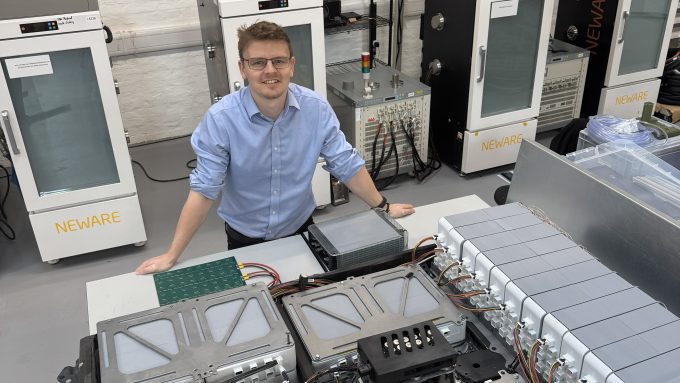
Built environment leaders speak out about planning reform

“If you want innovation, ultimately you need someone to drive it,” remarked Victoria Hills, Chief Executive of the Royal Town Planning Institute to a session focused on the future of place-making and the built environment.
Asked how the current Planning and Infrastructure Bill might be improved to enable innovation in place-making, she replied: “The one thing that is missing in the Bill is for a statutory chief planning officer in every local planning authority.
“Mobilising delivery requires someone with the appropriate level of seniority and experience to drive through change in how planning is done locally. It would be a missed opportunity not to have a statutory chief planner in local government to make that happen.”
Fellow panellist Peter Hogg, the UK Cities Director for consultant Arcadis commented that he thought reforming the planning system as a key to unlocking growth and innovative development “is a bit of a red herring”.
“I think there is lots that could be done to make the existing planning system better, and there are things that could be done to make it better resourced and more effective for applicants.”Peter Hogg, the UK Cities Director for Arcadis
Providing a step change in what the country is able to deliver doesn’t rely on root and branch changes to the planning system, he continued. “By all means look for ways to make the planning system better, slicker and more efficient. But don’t fixate on the fact that if we do more with the planning system we will drive a fundamental change in terms of the level of investment delivery and innovation in the UK.”
Places for London Chief Executive, Graeme Craig agreed. “I don’t see planning as being the issue; the single most useful thing this administration has done is saying we want to see homes built.” He added that from a ‘tonal’ point of view, that “matters more than any legislative change”.

Innovation more than a nice to have
Session chair Alan Welby, the Managing Director for Built Environment and Local Growth at Connected Places Catapult pointed out that if we are going to move at the pace needed for 1.5 million new homes this Parliament, “we can’t have a planning system that slows that down, so we will have to have innovative new ways of working” including using more data and digital planning.
Alan asked the panel whether innovation was a ‘nice to do’ in terms of their agendas, or a must.
“Innovation is critical, but innovation has to go alongside resilience and perseverance,” said Graeme Craig, who spoke of Transport for London’s asset base of 5,500 acres of land immediately around the transport network which could be considered for development, including housing.
“For us, the question is what can we do with that – and that is not on an individual site by site basis. You have to continually stand back and ask ‘in the round, are we addressing the challenges this city faces?’Graeme Craig, Chief Executive, Places for London

Football helping put places on the map
Panellists were asked for their thoughts about investment in other UK cities outside London. “What has changed in the last 10 or 15 years is other mayors of some Combined Authorities are getting very organised, and with extra powers, and trying to give London a run for its money,” said Victoria Hills.
The UK has a really strong brand globally, not least because a lot of our cities have strong sporting prowess, she continued.
“It helps that Liverpool is doing well at football,” she added. “Many of us who have been in regeneration for many years know that a lot of big schemes can involve the redevelopment of football clubs which can help attract a lot of investment in communities.”
“You may think that sounds flippant, but I’m sharing the reality of what I hear when I walk around international investment conferences. People love Liverpool, Newcastle and Manchester, for example, because they have a really strong brand.”
She also said that in the world of planning there are three P’s: processes, places and people. On the processes side, big data is important to help drive better decisions; for places there is a need to move to modern methods of construction to build quicker and cheaper off site; and in terms of people, the sector needs to ensure that all generations are part of the conversation, she said.
Peter Hogg added that innovation can be a source of competitive advantage, and if we want to attract investment into the UK, we have to make sure we have the most compelling proposition for capital to be spent.
“Innovation has to be around creating spatial propositions that cause people to say ‘Yes – that is a more appealing investment opportunity for us than something that is on offer in New York, Atlanta, Amsterdam or Sydney.
“That means you have to be shatteringly clear on what is the investment proposition when talking to investors.”
To watch a wrap-up video summarising this year's Connected Places Summit click here. Watch the full video of the built environment discussion below.





